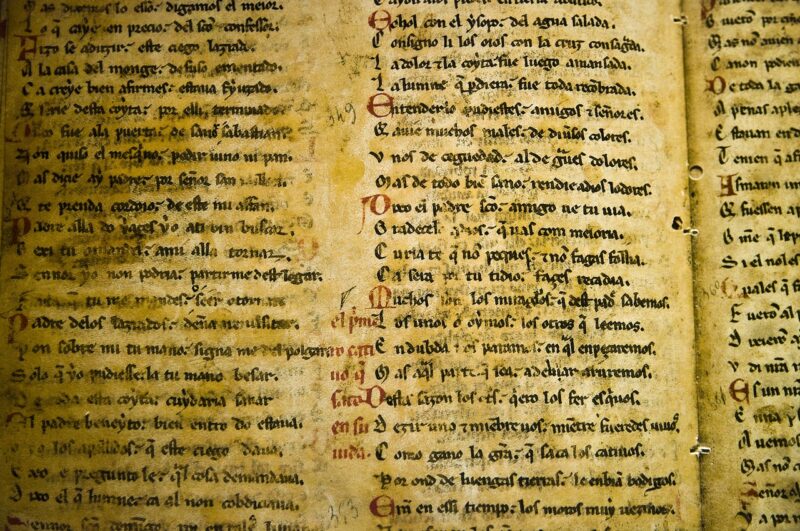
The Voynich Manuscript is often referred to as the world’s most mysterious book. This enigmatic text, filled with odd illustrations and an incomprehensible script, has puzzled scholars, cryptographers, and historians since its discovery. Created in the early 15th century, its origins, purpose, and meaning remain an elusive puzzle, sparking countless theories and research endeavors. In this article, we delve into the history of the manuscript, explore its contents, and examine the ongoing efforts to decipher this remarkable artifact.
1. Discovery of the Voynich Manuscript
The Voynich Manuscript was discovered in 1912 by rare book dealer Wilfrid Voynich in the Villa Mondragone, a Jesuit college near Rome. The manuscript, bound in a unique vellum cover, contained around 240 pages adorned with illustrations of plants, astronomical diagrams, and naked figures engaging in mysterious activities.
According to carbon dating, the manuscript was created between 1404 and 1438, placing it in the Renaissance period when Europe was experiencing a resurgence of interest in science and the natural world. However, its unusual script and illustrations suggest it was not intended for a conventional audience, raising questions about its original purpose.
2. The Contents of the Manuscript
The Voynich Manuscript is divided into several sections, each characterized by its distinct content and visual representations:
- Herbal Section: This part contains illustrations of plants, many of which do not exist in any known botanical taxonomy. Cryptographers speculate that these plants hold potential clues to the manuscript’s origin and purpose, but their identities remain unconfirmed.
- Astronomical Section: Featuring celestial diagrams, this section includes zodiac symbols and drawings of celestial bodies, perhaps hinting at an astrological or astronomical context for the text.
- Biological Section: Illustrations of nude figures engaging with plants, along with enigmatic glyphs, dominate this section. The meaning of both the illustrations and the script ignites speculation about the manuscript’s intentions regarding natural philosophy or alchemy.
- Pharmaceutical Section: This part features numerous strange recipes, detailed with various plants and their medicinal uses, prompting theories about herbology or Early Modern pharmacology.
Each section, with its cryptic script and bizarre illustrations, seems to serve an unknown purpose, leaving researchers baffled.
3. The Script: A Unique Linguistic Enigma
One of the most striking features of the Voynich Manuscript is its unique script, which has defied successful deciphering attempts for centuries. Unknown to any known language, the text on its pages appears to comprise an alphabet of around 20-30 distinct letters, combined to form thousands of words.
Many linguists and codebreakers attempted to decipher it, including the British government during World War II, all without success. The manuscript’s writing style has led some researchers to propose that it might be a sophisticated hoax made to look like a coded language.
Despite this skepticism, interest remains high in deciphering the text, supported by advancements in cryptography and digital analysis techniques. Recent studies applying machine learning algorithms have generated patterns and correlations, although none have led to a complete translation.
4. Theories and Speculations
Numerous theories surround the purpose and meaning of the Voynich Manuscript, each adding a layer of allure to its mystery:
- A Medieval Herbal: Some believe the manuscript serves as a medieval herbal, documenting unknown medicinal plants and their uses. However, the plants depicted don’t match any known species, raising doubts on this theory.
- An Illuminated Alchemical Text: Many scholars posit that the manuscript may be related to alchemy, blending images with esoteric symbols and concepts of transformation and material transformation.
- A Constructed Language or Code: Another popular theory is that the entire manuscript is written in a constructed language, intended to defy understanding, possibly created by an individual or group with a fascination for puzzles and enigmas.
- An Elaborate Hoax: Some skeptics believe the manuscript could be a hoax intended to deceive scholars and collectors, showing artistic skills rather than any significant content.
The lack of consensus among historians, linguists, and cryptographers continues to fuel the intrigue surrounding the Voynich Manuscript.
5. Modern Research and Attempts at Decipherment
In recent years, the application of modern technology has sparked renewed interest in deciphering the Voynich Manuscript. Researchers have utilized various techniques, including:
- Machine Learning Algorithms: Recent studies employ AI to analyze the manuscript’s structure, identifying potential patterns and linguistic structures that could hint at decoding strategies. Although promising, these techniques have yet to lead to conclusive results.
- Statistical Analysis: Linguists have begun applying statistical analysis methods to the text, comparing it to other languages to search for correlations. This approach intends to draw parallels that could clarify language structure or vocabulary use within the manuscript.
- Collaborative Research Efforts: A surge of interdisciplinary projects has emerged, combining linguists, historians, botanists, and computer scientists in a collaborative effort to study the manuscript from various perspectives, fueling more innovative theories and models for understanding its content.
Despite decades of research, the Voynich Manuscript remains as mysterious as ever, a testament to the boundaries of human understanding and the unknown.
6. Conclusion: The Allure of Mysteries
The Voynich Manuscript continues to captivate researchers and the curious alike, embodying the rich tradition of medical, astronomical, and botanical knowledge from the Renaissance era, cloaked in an inscrutable script. As technology advances and our understanding of linguistics improves, the hopes of deciphering this endless enigma remain alive. However, until a breakthrough occurs, we cherish the mystery of the Voynich Manuscript, a treasure of the unknown that invites us to ponder its secrets and the context of its creation. The manuscript stands as a reminder of mankind’s propensity for inquiry and the enduring allure of the mysteries that surround us.
Whether it ever reveals its secrets or not, the Voynich Manuscript serves as a testament to our quest for knowledge and the intricacies of human history that continue to unravel through time.







